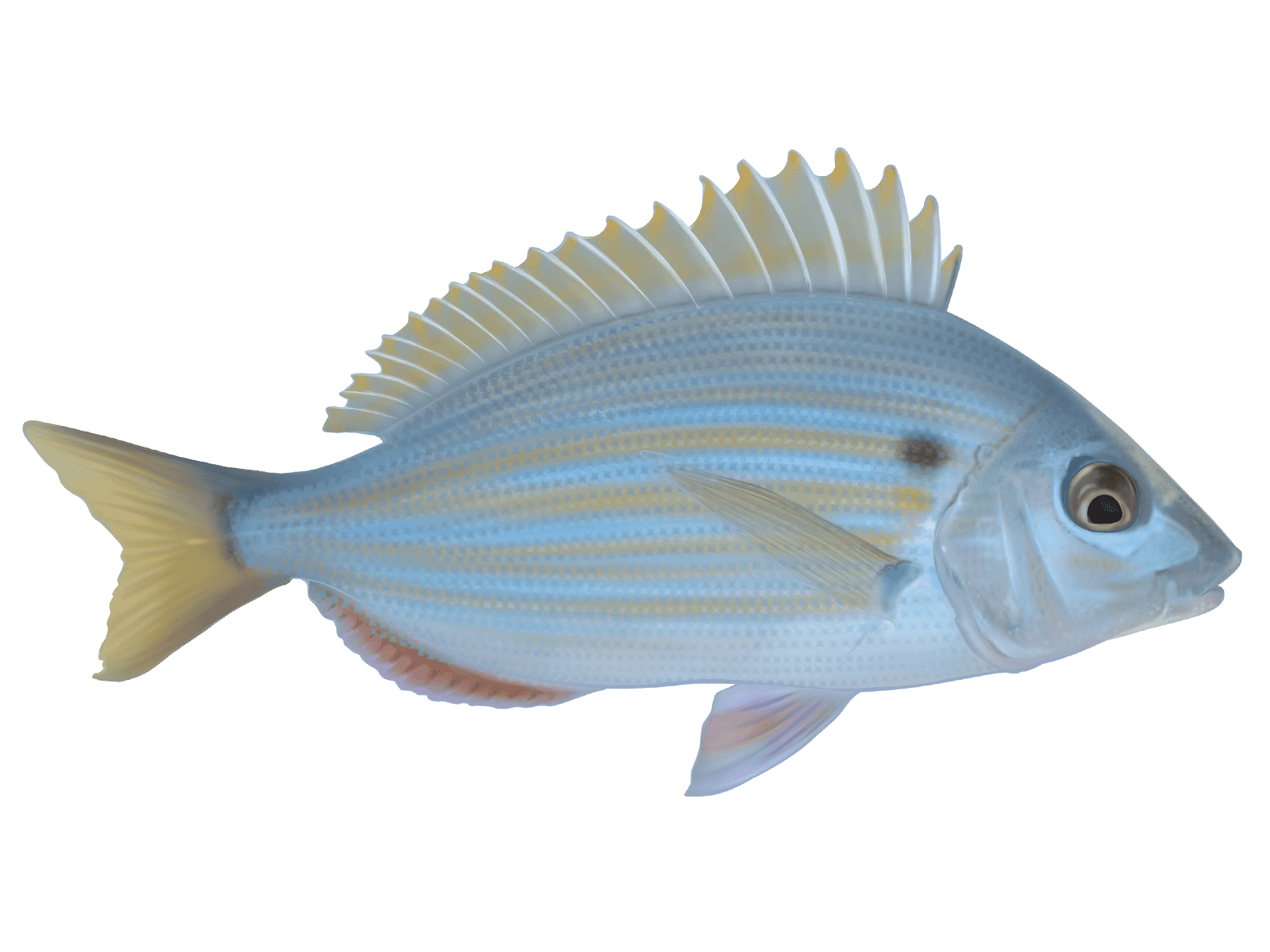Pinfish

Species Details
Lagodon Rhomboides
Sparidae
Perciformes
Seagrass Flats, Mangrove Swamps, Corals rich with Barnacles
1 - 3 lbs.
4" - 16"
Pinfish (Lagodon rhomboides) Fish Description
Pinfishes are not as small as a pin. Nor, are they as long as one. Their namesake appears to come from the spines that form their dorsal fin. Its dorsal fin alone has 12 spines which is why it’s a pretty difficult fish to handle. Not because it’s vicious but it’ll prick you in places you don’t want to be pricked if you don’t catch the Pinfish right.
Pinfish have dark vertical bars covering their silvery-white body. Their backs are dark olive green but have pigmentations of yellow, blue, green, and rarely, neon purple.
Diet and Size
Pinfishes don’t really eat other fish as an adult. But they’re not picky either. Usually, they hang around the bottom near rocks and corals where they can feast on their all-time favorite: barnacles. However, juvenile Pinfish are known to be piscivorous. They like eating crustaceans and fish fry.
Pinfish are pretty small. They usually grow up only to 4.5 inches. So far though, these fish are not known to extend past 8 inches. However, this may be so because Pinfish are normally preyed on by other fish such as the Alligator Gar, Longnose Gar, Southern Sea Trout, Red Drum, and other fish.
Interesting Facts about the Pinfish
- Because Pinfish are so small, they don’t qualify for a state record.
- Pinfish are notorious for bait stealing. To make the most of their bait stealing, anglers use the Pinfish as bait instead to catch other fish.
- Some people do keep Pinfish as pets.
- Pinfishes are not edible. They’re small and have a lot of bones.
- Pinfish may go by other names such as Bream, Perch, and Butterfish.
- They’re the reason why the amphipods’ populations are easy to maintain. Pinfish feast on them.
- Pinfish are popular as live bait.
Pinfish – Fishing Techniques: How to Fish for a Pinfish
When fishing for a Pinfish, the first thing to check is what time of the day it is and what the temperature is. Pinfish are easily affected by temperature and are not fond of cold waters. Another is that they’re more active in the daytime so your best chance to catch a Pinfish is in the morning. Although they do have some activity at night, it’s quite rare.
They travel in groups so usually; hooks are not advisable for them. And if you are going to use a hook, you don’t hook them by their mouth. The hook has to go into their body. This is why anglers often advise using nets. However, this is also under the assumption that you’re catching Pinfish to serve as bait for other fish.
Pinfish usually go into waters that are 30-50 ft deep which is why some recommend using what they call a Sabiki Rig. The Sabiki Rig was designed to catch small fish which is usually accompanied by a bag of chum. But this can attract other fishes which is why some people recommend dropping the rig lower for the Pinfish to come out.
Habitat and Distribution
Pinfish are addicted to Sea Grass. One of the best places to go find them is at the edge of a Seagrass Flat. Since Pinfish love feasting on crustaceans and other fish that hide amongst the Sea Grass, that’s the best place to chum it up. The edge of a Seagrass Flat is usually where the sand meets and you can try throwing some chum, leftover squid, and shrimp there to get them to come to you.
Mangrove swamps seem to also be a good place to catch some Pinfish. But they’ll be accompanied by other fish so be warned, there will be a lot more kinds of fish such as grouper and snapper.







